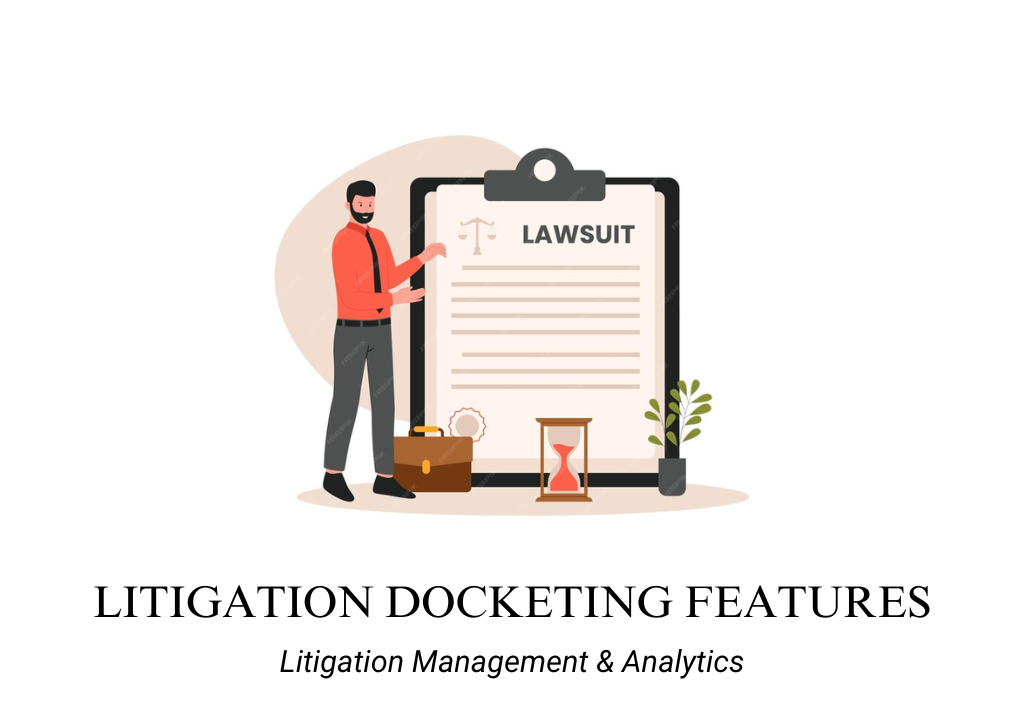Introduction
Meaning
Litigation docketing is a functionality within litigation management and analytics tools designed to manage and track all important deadlines, filings, and events related to legal cases. This involves maintaining a detailed calendar that includes court dates, filing deadlines, and other critical milestones in the litigation process. Proper litigation docketing is essential for ensuring that all procedural requirements are met and that legal teams stay on track with case management.
Purpose
The purpose of litigation docketing is to provide legal teams with a centralized system for tracking all deadlines and important dates associated with their cases. By managing these deadlines effectively, legal professionals can avoid missed deadlines, reduce the risk of sanctions, and ensure compliance with court rules. This functionality helps in organizing case-related activities, facilitating smooth workflow, and enhancing coordination among team members.
Benefits
- Deadline Management: Ensures that all critical deadlines are tracked and met, reducing the risk of missed court dates and late filings.
- Enhanced Coordination: Provides a centralized calendar for all case-related events, improving team collaboration and communication.
- Compliance Assurance: Helps maintain compliance with court rules and procedures by tracking all relevant deadlines and requirements.
- Risk Reduction: Minimizes the risk of sanctions and penalties due to missed deadlines or improper filings.
- Customizable Tracking: Allows for customized docket entries and reminders tailored to the specific needs of each case.
CHECK MORE: Guide to find best Litigation Management & Analytics Tools for Lawyers
Features
Collaborative Timeline Tracking
- Meaning: Collaborative timeline tracking is a feature that enables legal teams to jointly manage and monitor important case-related events and deadlines. This involves creating a shared timeline that outlines all critical dates, such as court hearings, filing deadlines, and discovery cutoffs, allowing all team members to stay informed and aligned.
- Purpose: The purpose of collaborative timeline tracking is to enhance coordination and communication within legal teams by providing a single, unified view of all case milestones. This feature ensures that everyone involved in a case is aware of upcoming deadlines and can prepare accordingly, reducing the risk of miscommunication and missed deadlines.
- Use Cases:
- Team Coordination: A law firm uses collaborative timeline tracking to ensure that all team members are aware of critical deadlines for an upcoming trial, allowing them to prepare filings and motions in a timely manner.
- Case Management: A corporate legal department employs collaborative timeline tracking to manage deadlines across multiple cases, ensuring that each team member has visibility into all key dates and tasks.
Court Rule Tracking
- Meaning: Court rule tracking is a feature that helps legal teams stay up-to-date with the specific rules and requirements of various courts. This includes monitoring changes to local court rules, procedural requirements, and filing guidelines to ensure compliance.
- Purpose: The purpose of court rule tracking is to reduce the risk of errors and omissions by providing timely updates on court rules and procedures. This feature helps legal teams maintain compliance with jurisdiction-specific requirements, ensuring that all filings and actions are in accordance with current regulations.
- Use Cases:
- Compliance Management: A litigation team uses court rule tracking to ensure that all filings adhere to the specific rules of the court in which they are practicing, avoiding rejections and delays.
- Multi-Jurisdictional Cases: A national law firm uses court rule tracking to manage cases across different jurisdictions, ensuring compliance with varying court rules and deadlines.
Court Database Integration
- Meaning: Court database integration is a feature that connects litigation management tools with external court databases. This allows for the automatic retrieval and updating of case information, court dates, and filing requirements directly from the courts.
- Purpose: The purpose of court database integration is to streamline the process of accessing and updating court-related information. By automating the retrieval of court data, this feature reduces manual entry errors, saves time, and ensures that legal teams have the most current information available for their cases.
- Use Cases:
- Automated Updates: A law firm integrates its docketing system with court databases to automatically receive updates on court dates, deadlines, and filings, ensuring that all information is accurate and current.
- Case Monitoring: A legal team uses court database integration to monitor changes in case status, quickly adapting their strategies and filings in response to new developments.
Customized Docket Entries
- Meaning: Customized docket entries are a feature that allows legal teams to create and manage personalized docket entries tailored to the specific needs of each case. This includes the ability to add custom notes, set reminders, and categorize entries based on case requirements.
- Purpose: The purpose of customized docket entries is to provide flexibility and adaptability in managing case calendars. By allowing for tailored docket entries, this feature helps legal teams manage their cases more effectively, ensuring that all unique aspects of each case are accounted for and tracked.
- Use Cases:
- Case-Specific Entries: A litigation team creates customized docket entries to track unique case requirements, such as special motions or settlement conference dates, ensuring that all specific needs are documented and monitored.
- Personalized Reminders: A law firm sets up customized reminders for specific actions, like expert witness depositions or document production deadlines, ensuring that all team members are prepared and aware of their responsibilities.
Conclusion
These litigation docketing features are essential for effective case management and compliance in the legal field. By utilizing these tools, legal teams can enhance coordination, reduce the risk of missed deadlines, and ensure that all court-related activities are handled efficiently and accurately.
CHECK OUT LITIGATION MANAGEMENT TOOLS ON DIRECTORY OR CLICK HERE

